Project 4-GT School
This project is about educational inequality
“Every child has the right to education, regardless of health or illness”.
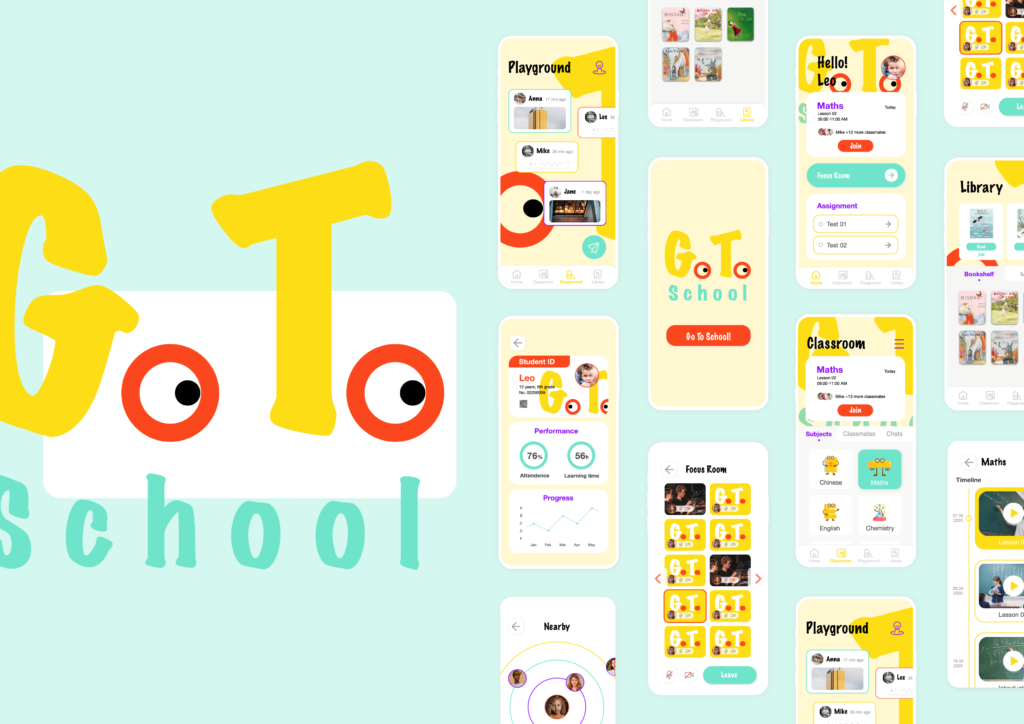
GT School is an online platform for children with leukemia who need to be hospitalized for a long time and cannot experience school life to have access to educational resources and social with friends when they are in rehabilitation.
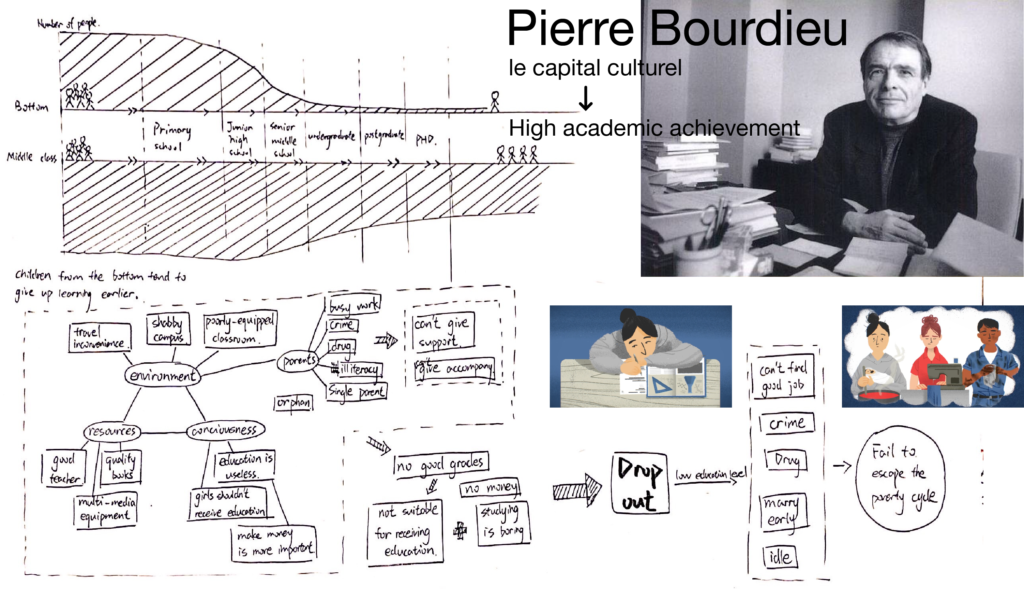
The stratum occupying a dominant position in a society will transform their economic, social, and political advantages into a kind of cultural capital to pass on to their children. And the education system has successfully transformed social privileges into talents or personal academic performance, thereby maintaining inequality without interruption.
Education is a major route out of poverty for individuals and nations. In some poor countries, initial enrollment in school is high, but half the children drop out by the end of year 6, and only a third complete the 9 years of junior high school. Children from the bottom are more likely to drop out due to various reasons.
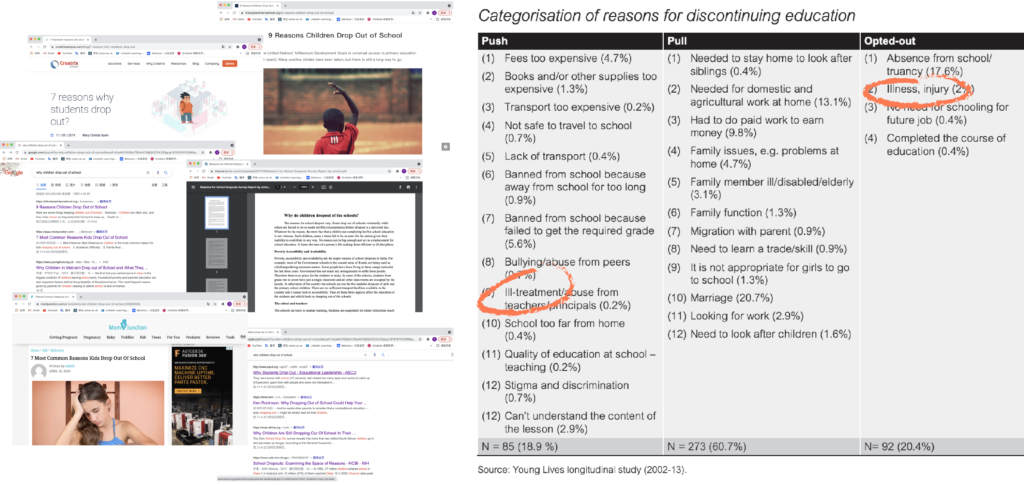
I found that the key factor why children drop out of school is that some of them had missed too many classes for many reasons and could not catch up any more. One of the reasons is that they cannot go to school due to the illness which need hospitalization.
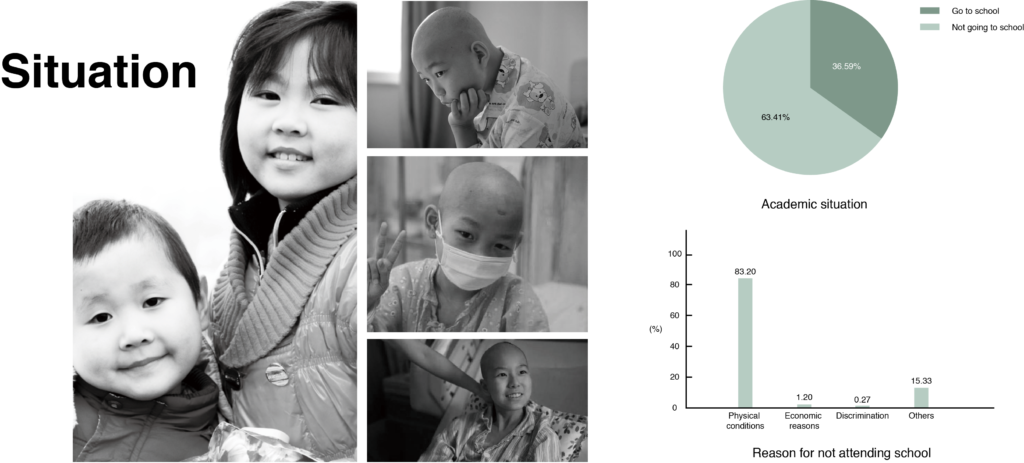
Leukemia, a cancer that begins in stem cells found in the bone marrow, is the most common childhood cancer. It affects more children than any other cancer.
There are about 8,000 children with leukemia in China every year, and 70% of them can be cured and return to their original social environment. However, the treatment period for childhood leukemia is generally 2-3 years. During this time, they need to be hospitalized and treated for a long time, and cannot go to school normally like most of their peers. In China, the number of children who have interrupted their studies due to leukemia is between 150,000 and 200,000. These children who are out of school with the disease have become a group of forgotten children.
In the survey, 36.59% of children were still in school (including kindergarten), and 63.41% of children were not in school. Among the reasons for not going to school, physical condition is not allowed to be the main reason (83.20%), fear of children being discriminated accounted for 0.27%, economic not allowed accounted for only 1.20%, and other reasons accounted for 15.33%. Most of the children did not start school or interrupted schooling at school age due to illness. This is related to the procedure of leukemia treatment, during which multiple hospitalizations or rechecks are required. Although many children no longer need hospitalization, the unstable health status of the children and the parents’ concerns about the children also affect the children’s enrollment.
Some children have delayed their studies due to treatment and need to be downgraded when they return to school. This will not only affect the children’s learning progress, but also have a certain impact on the children’s psychology. In addition, although some children still cannot go to school, they insist on self-study while being treated, hoping to recover soon and go to school.
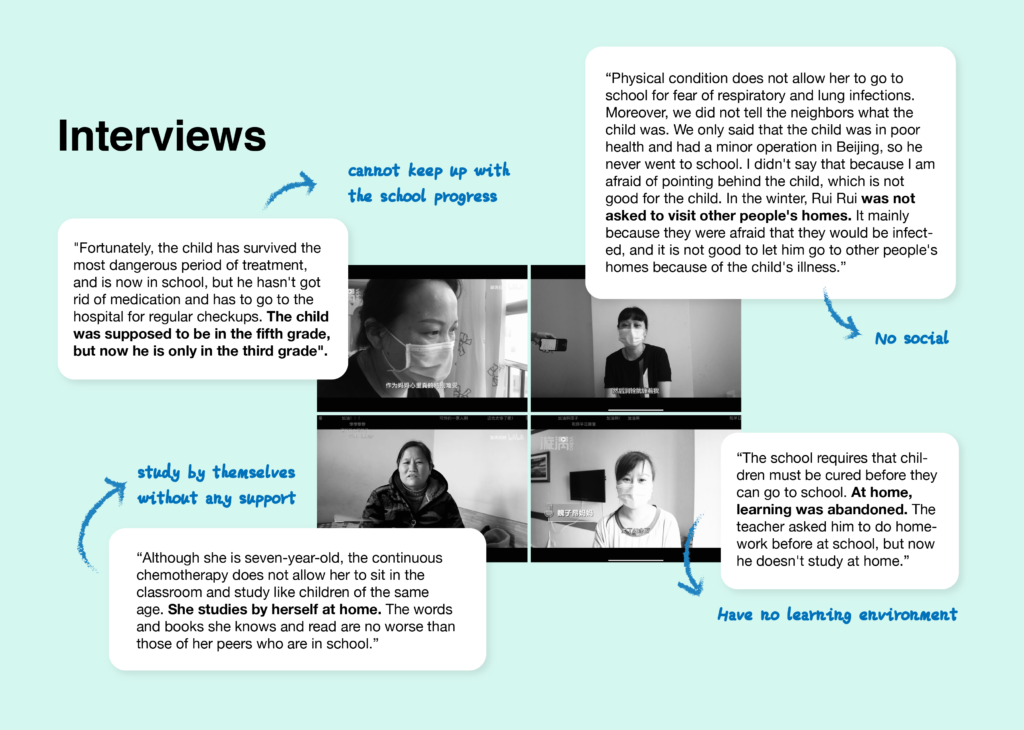
According to the interview with the guardian of the child, it can be known that the physical and mental health, social communication, and education of children with leukemia are all affected by the disease to varying degrees. During the long-term treatment period, children often stay away from school due to low immunity and frequent treatment, and lose peer relationships, leading to psychological and social adjustment problems such as lack of interpersonal communication. At present, compulsory education is a blank in terms of long-term hospitalized children.
Insights
Children drop out of school because they have absent too many classes and cannot catch up.
Children with leukemia drop out of school early because the long-term lack of education has affected their learning ability to a certain extent.
Children with leukemia cannot receive education because they have no access to the school curriculum when they need to be hospitalized.
POV
Children need to have access to relevant educational resources because it is hard for them to study by themselves without any support.
HMW
Create a platform that children can have access to learning resources ?
Help teachers and children communicate online?
Provide a positive studying environment for children?
Help children interact with knowledge in an interesting way?
Inform parents how to tutor children with schoolwork?
Make homework can be completed online and submitted to get feedback from the teacher?
Help children take exams online according to their own learning progress and get results?
Let children participate in classroom teaching through live broadcast?
Help children have access to the school curriculum and study when they are in the hospital.
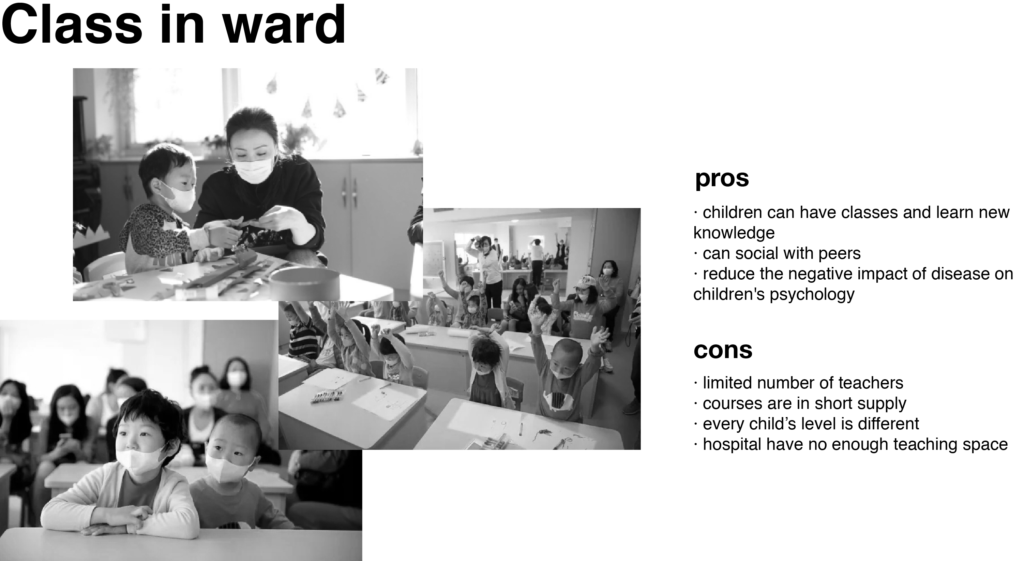
Some non-profit organizations set up classrooms in the ward for these children who need to be hospitalized for long-term treatment. Although volunteers help these children receive education by bringing classes into hospital wards, they still cannot meet the needs of children who desire to go to school because the demand is too great and they cannot cover all children.
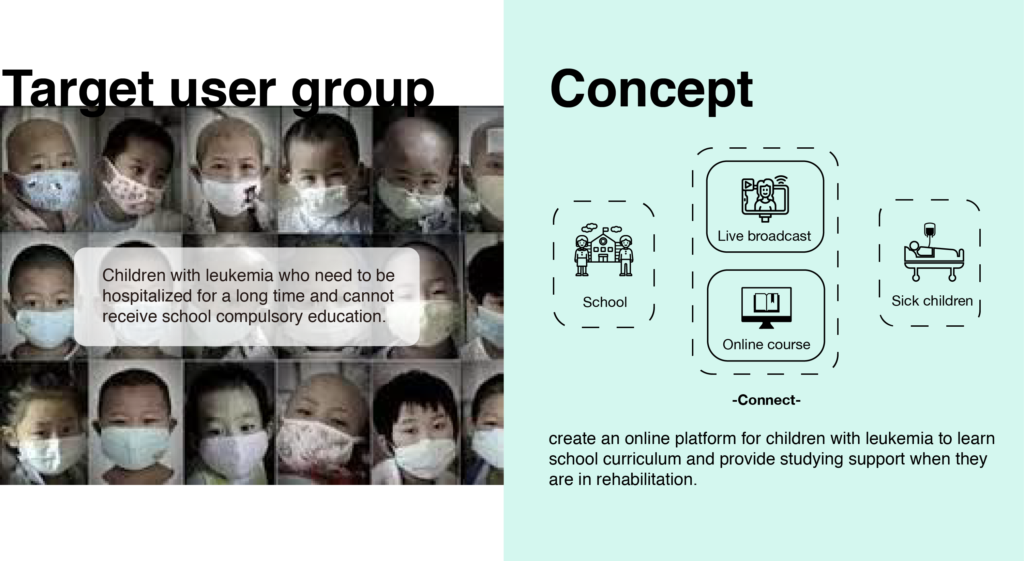
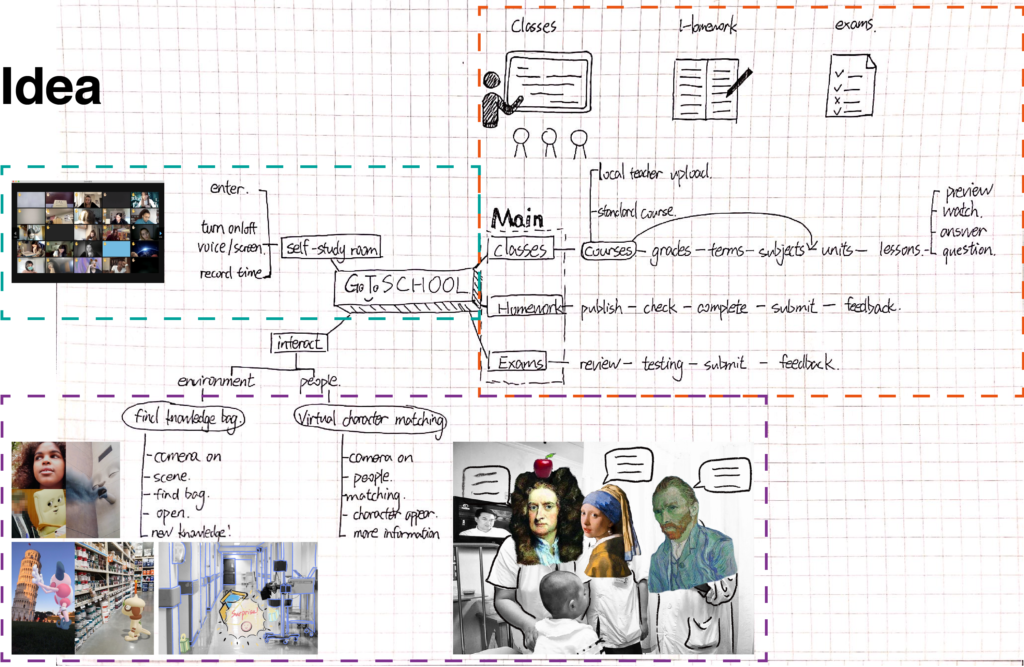
My idea is about providing a platform that children can get in touch with school courses and communicate with teachers and new classmates when they are in the hospital. By combining with these children’s original school curriculum, teachers can upload lesson videos for children to learn and provide feedback of assignments and exams. Children can study with classmates in online study room which provide a positive learning atmosphere. They can also meet new friends through online courses to form their own school circle through this platform. The life in the ward is boring so I start to think about whether children can be encouraged to interact positively with environment and people in some way. By matching the characters in the textbook or comic books with real people by AR, children can walk out and have interactions with people around them. It can help to solve the problem that children have no access to relevant educational resources and lack of normal social interaction because of the disease requiring long-term hospitalization.
PACT Analysis
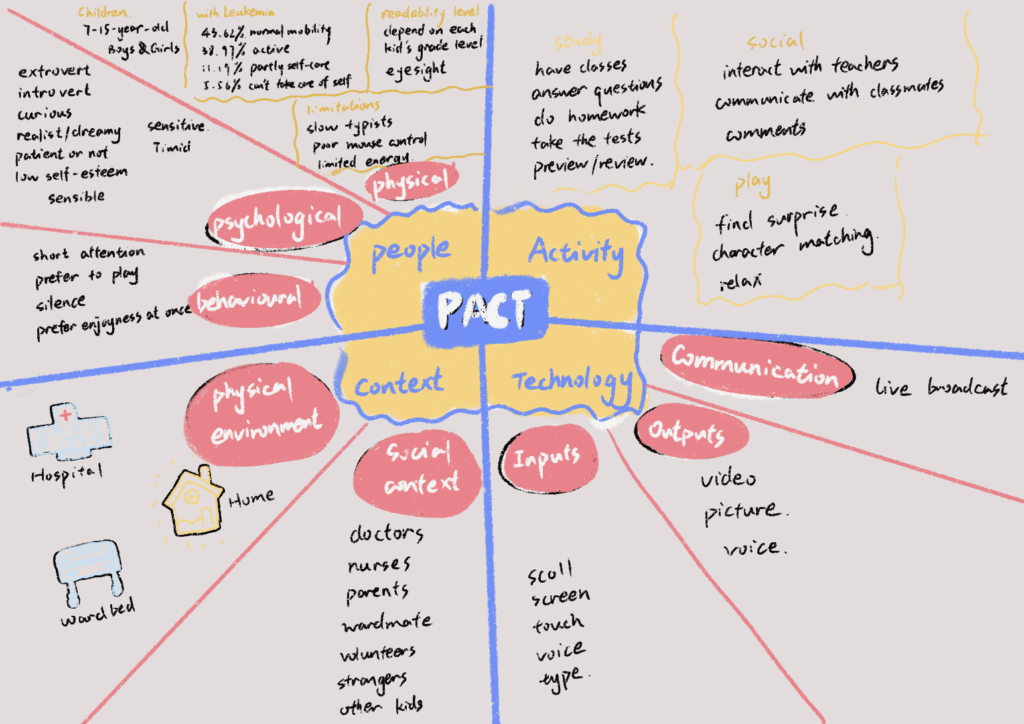
I identified characteristics of my target user group that I have to take into account when design the app through PACT analysis. Basically, every users are different in terms of their cognitive abilities and physical abilities. As kid’s physical development throughout childhood changes, so do their physical abilities, constraints, and device preferences. For example, touch gestures such as swiping and tapping big targets are easy for all children, but fine gestures such as dragging are hard for young kids. Therefore, I should design interface in such a way that it is suitable and can be used smoothly by all of my targeted users based on the identified user characteristics.
Empathy Map
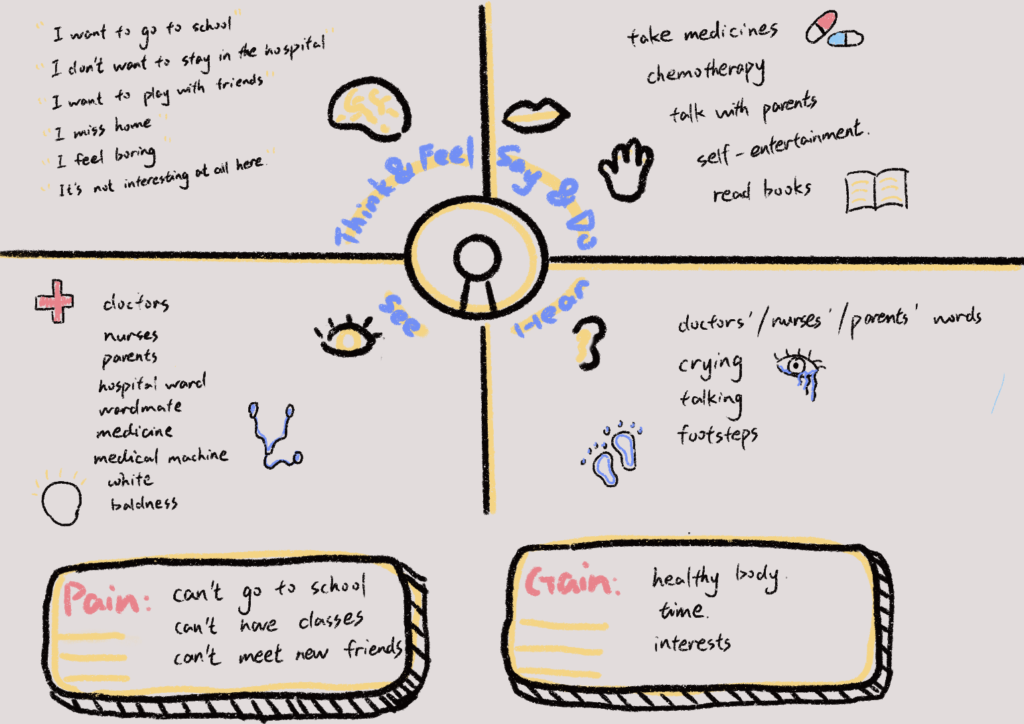
Persona
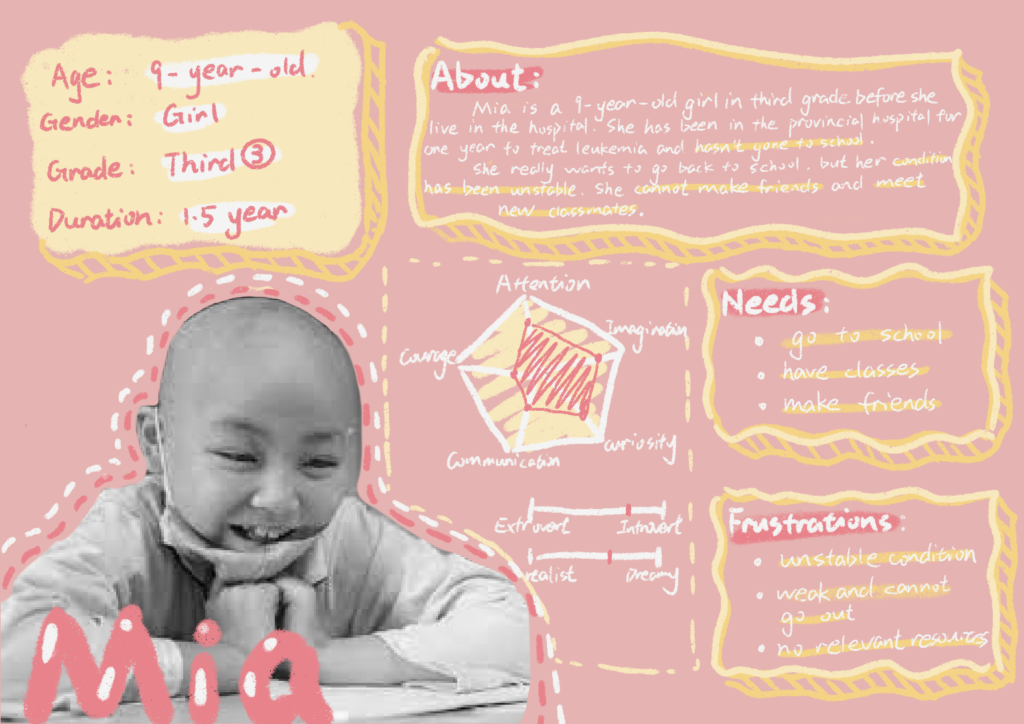
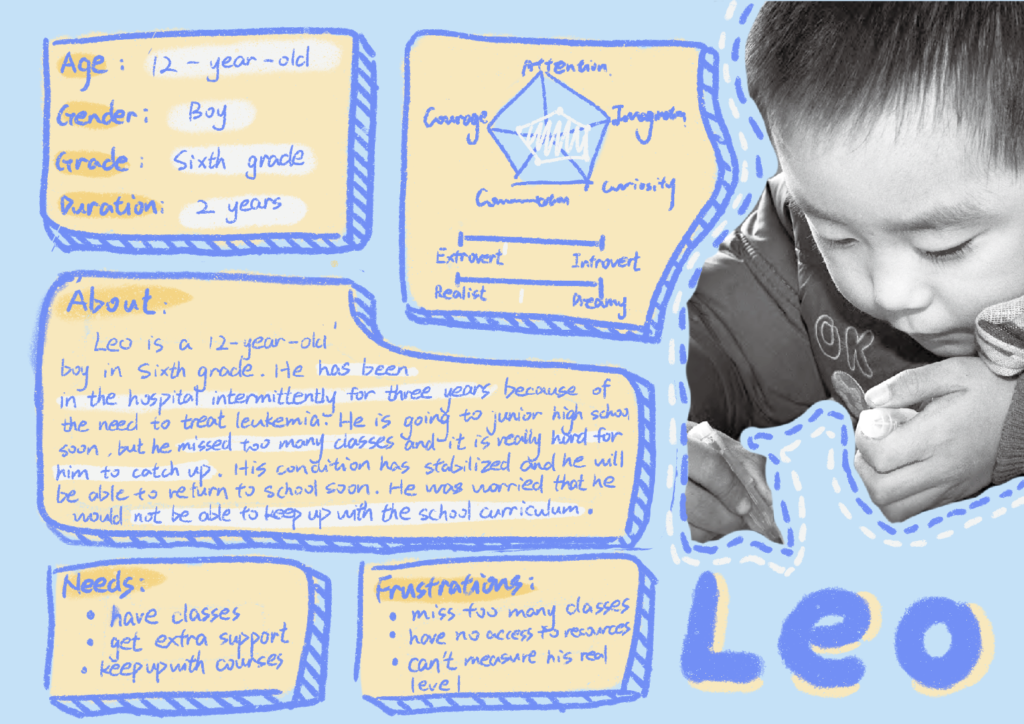
User Flow
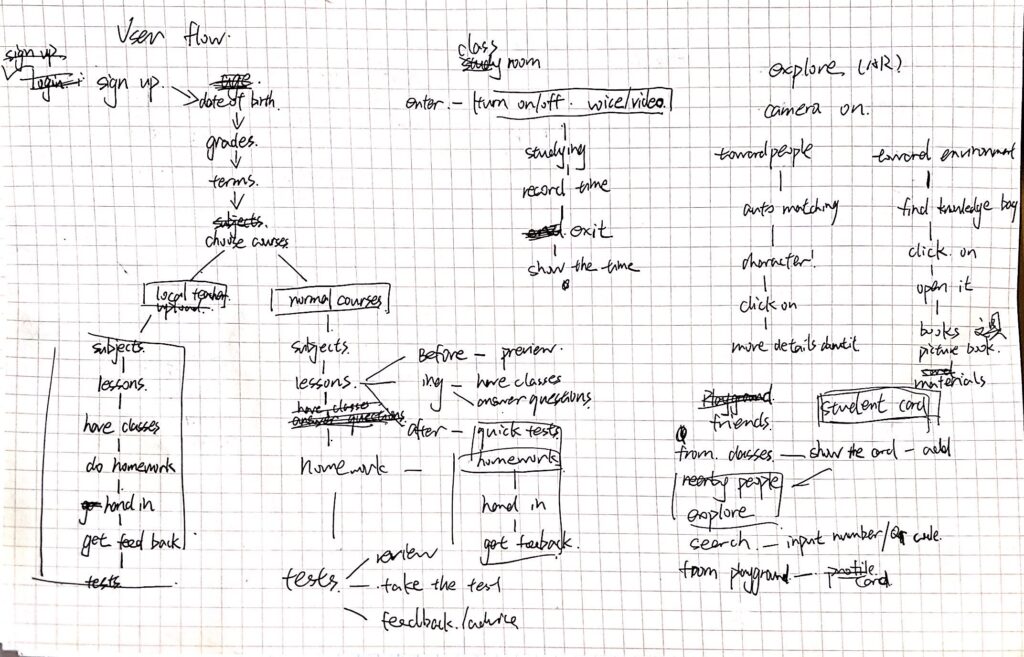
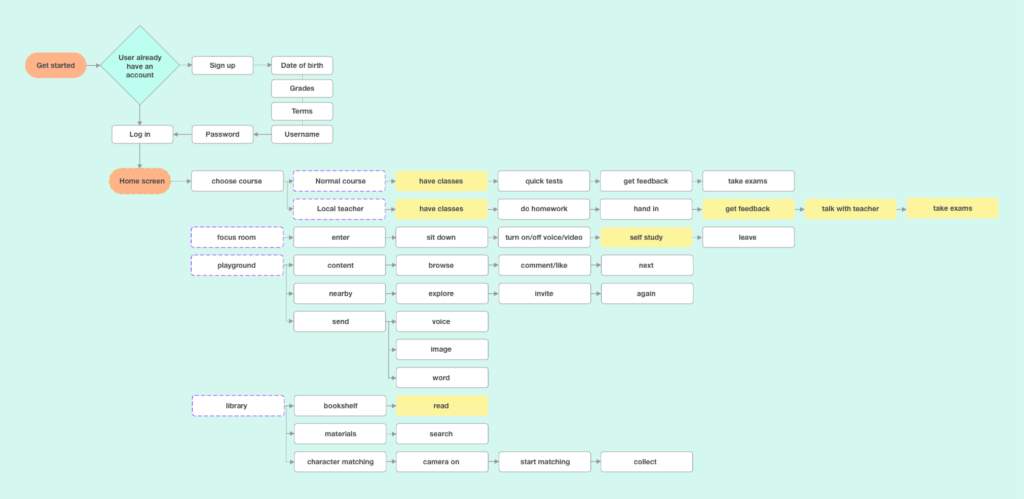
Information Architecture
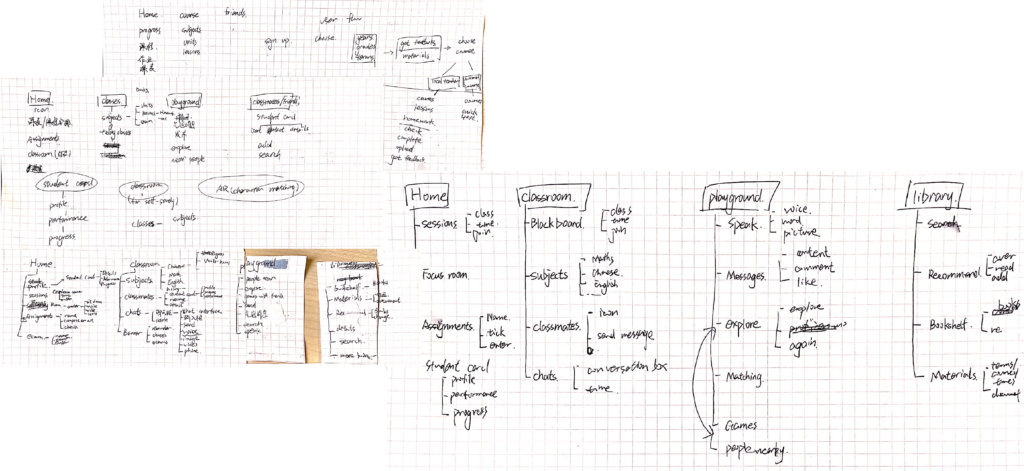
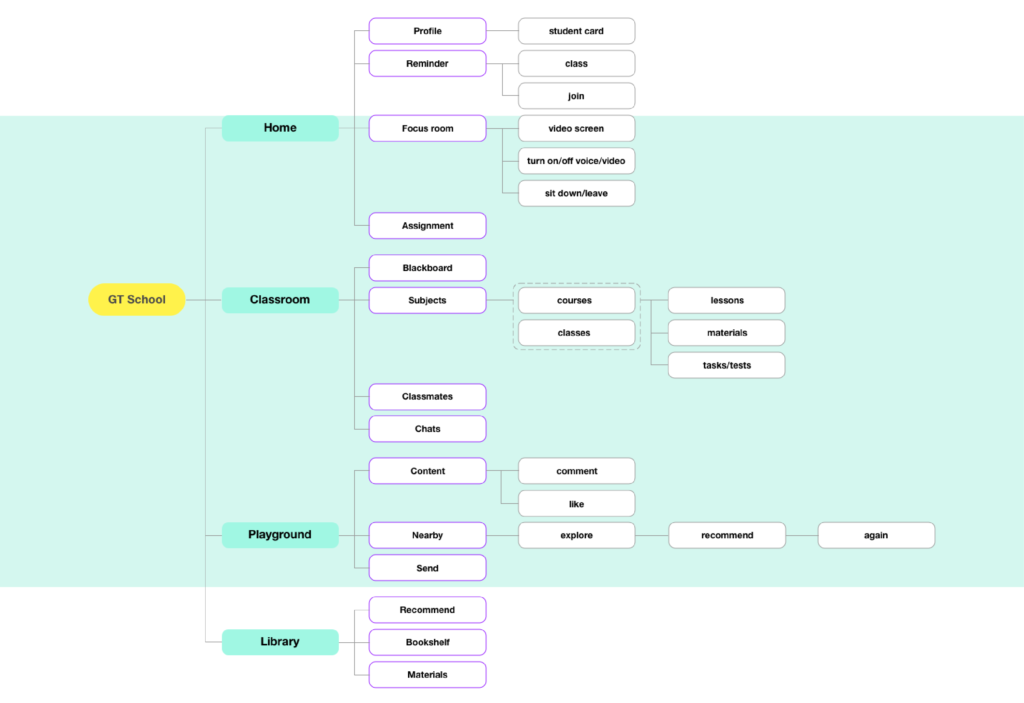
Considering that not all children can possess an ipad or some other device that have big screen, though the big screen is more friendly for children to have classes. I decided to design an phone app because most of their guardians have mobile phones, so it is more easy for them to have access to.
Wireframes
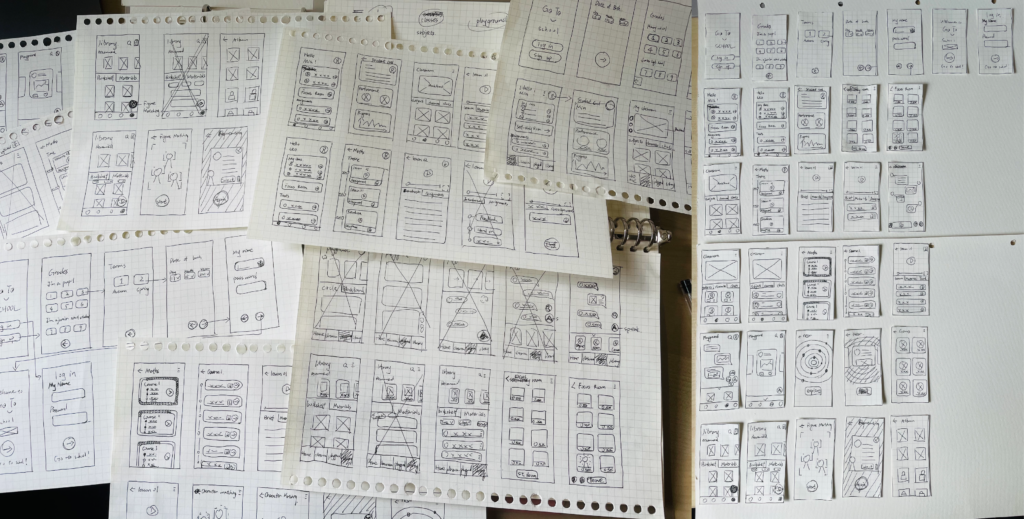
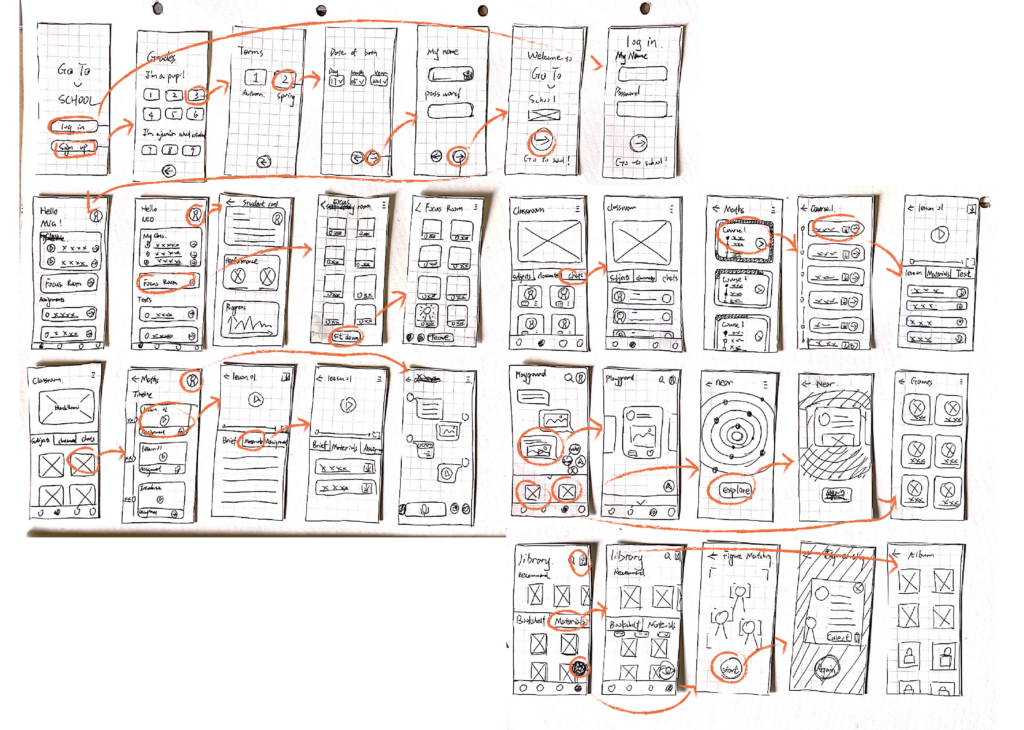
Lo-Fi Prototypes
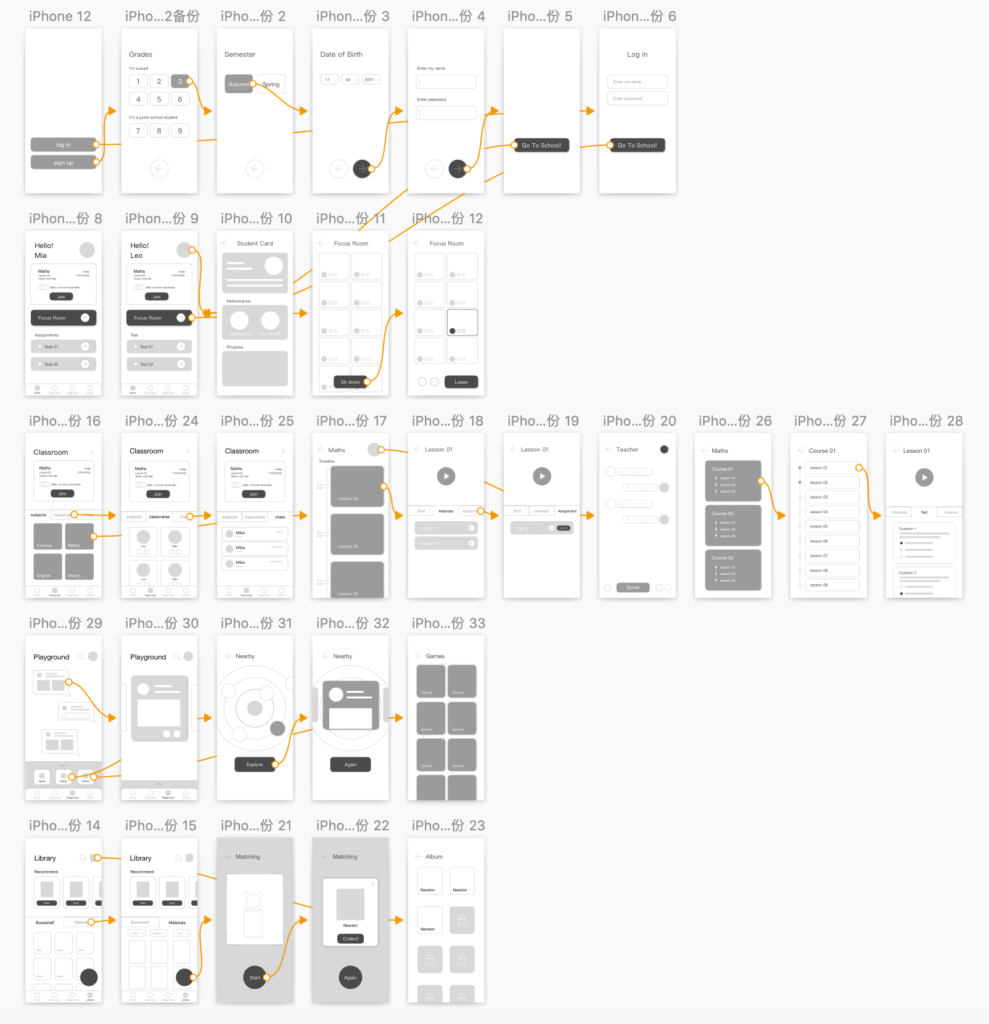
Moodboard
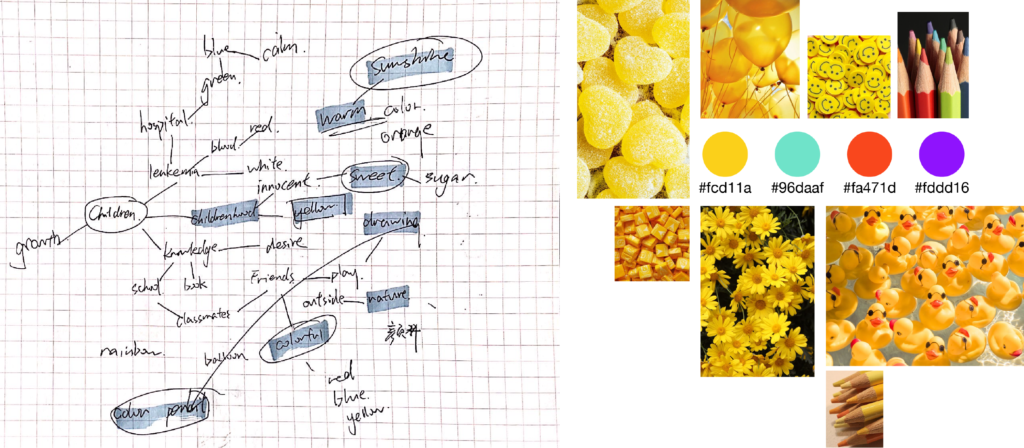
Icons & Typography
![]()
The app is called ‘GT School’. It means that children with leukemia can also ‘go to school’ and receive education like healthy children.
Hi-Fi Prototypes
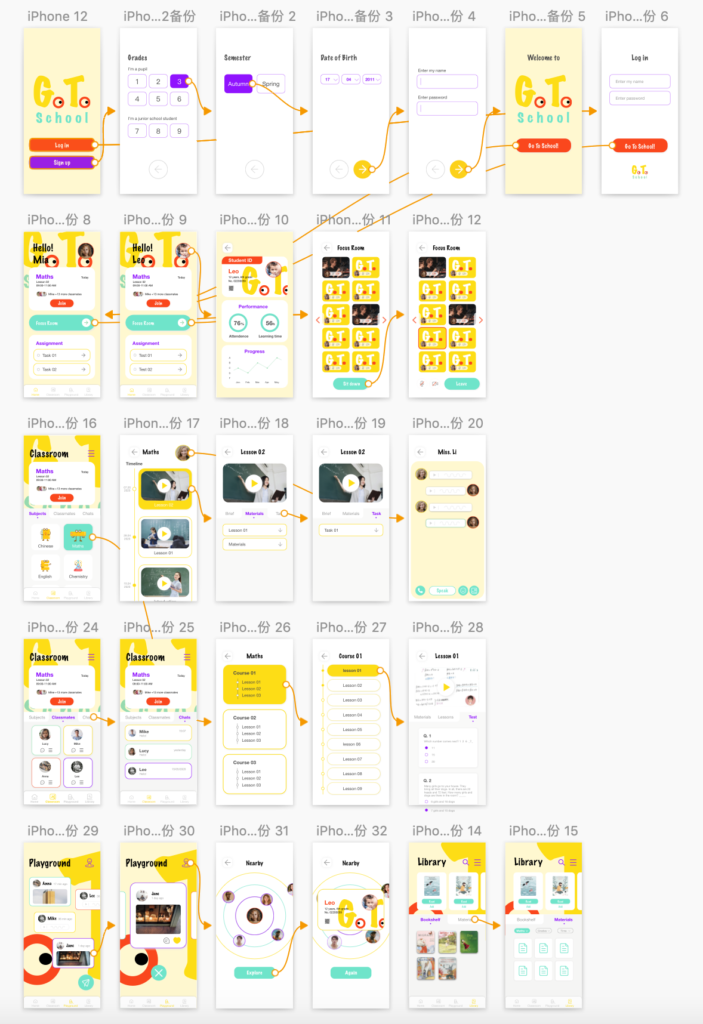
User Testing
According to the user testing, I found that the setting of some buttons are not obvious enough. The switch between interfaces is not smooth enough, and the user need to click multiple times to complete the operation.
